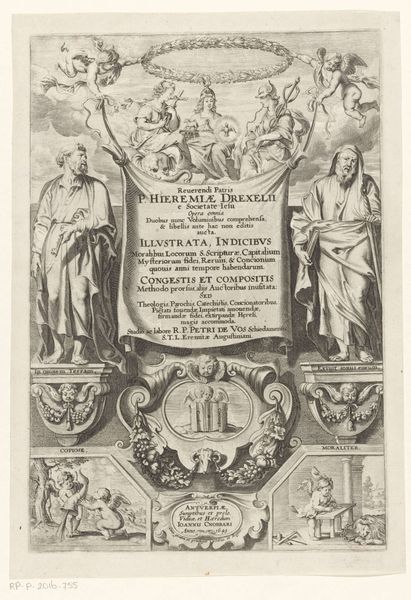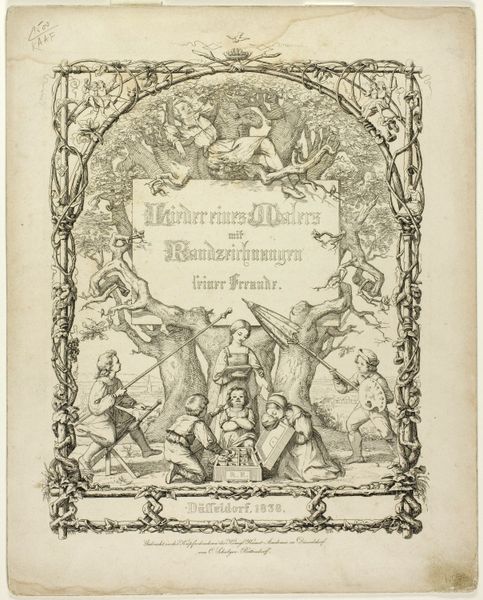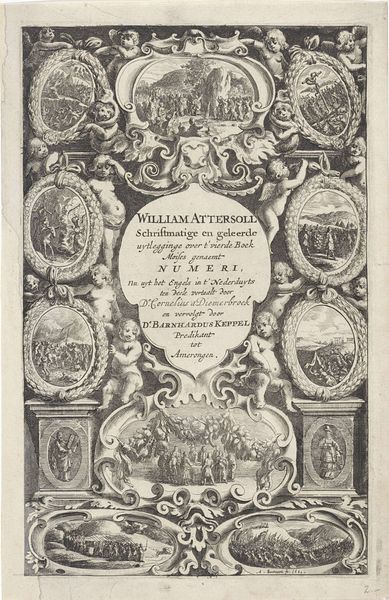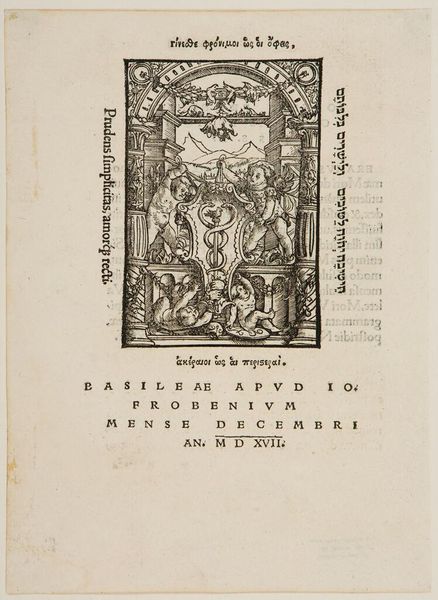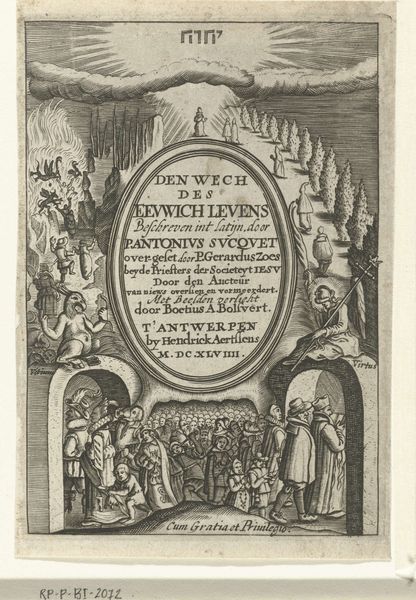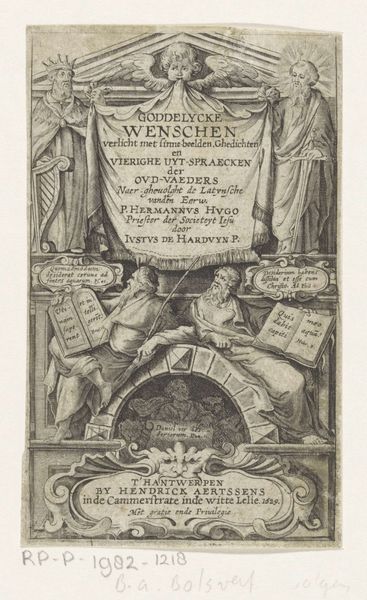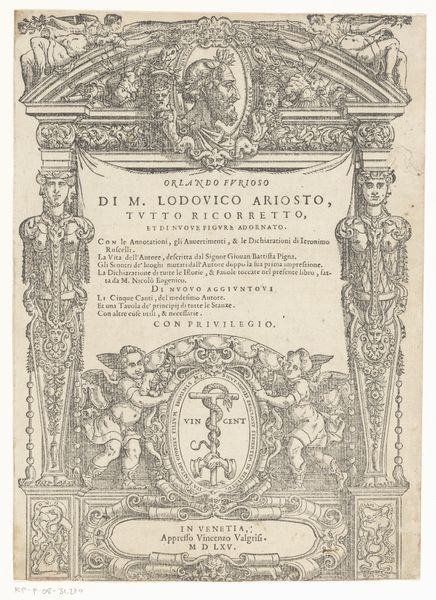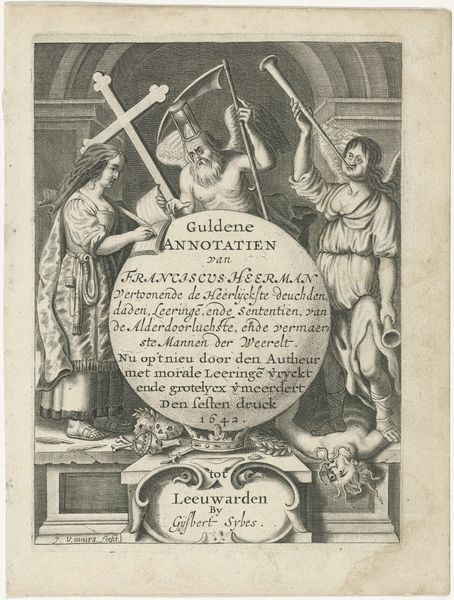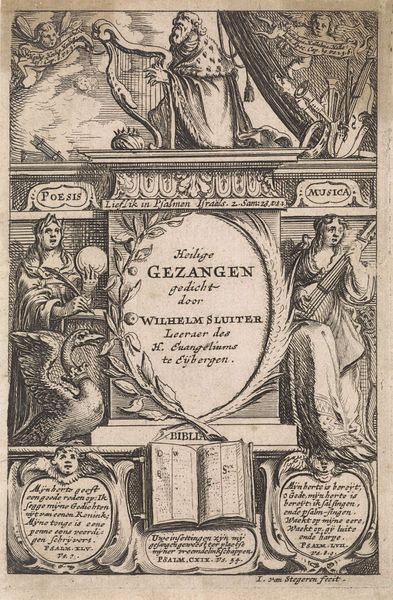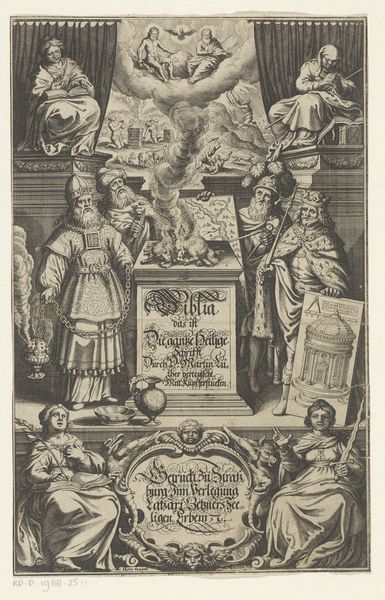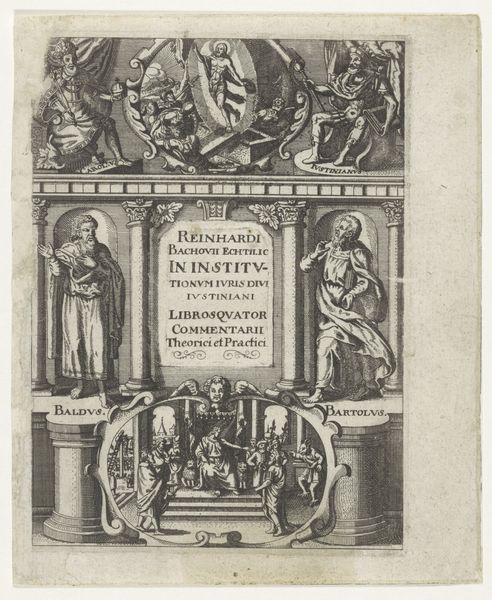
print, engraving
#
allegory
#
baroque
# print
#
pen sketch
#
old engraving style
#
history-painting
#
engraving
Dimensions: height 100 mm, width 52 mm
Copyright: Rijks Museum: Open Domain
Curator: At first glance, there’s a rather antiquated sensibility at play within this print, it has a clear thematic preoccupation with classical allegories. Editor: Indeed. We're looking at an engraving from 1641, titled "Wetenschappen, mijnwerkers en een schrijver" which translates to "Sciences, Miners, and a Writer." Curator: Yes, and observe the meticulous, almost rigid composition. The artist has segmented the work into distinct tiers, creating a hierarchy of imagery. It strikes me how each stratum communicates a different facet of the allegory. Notice how the top displays several figures and texts. Editor: From a historical standpoint, it's crucial to remember the context in which this engraving was created. The early 17th century was a period of significant scientific advancement, yet still heavily influenced by religious doctrine and patronage. Curator: Precisely, the print reflects a synthesis of the era’s values. Observe how the symmetrical arrangement, typical of baroque sensibilities, lends a sense of order to the various compartments. There’s a balanced contrast, would you agree? Editor: I concur. Also, let’s unpack the title itself. The depiction of sciences suggests the celebration of knowledge. It is an endorsement of learning, even as figures who are literally extracting resources from the earth stand opposite to a scribe, emphasizing the intellectual work happening here. Curator: And structurally, the light and shadow effects further augment the mood, creating stark contrasts that delineate each character and form. Look, for instance, at how light emphasizes the tools the miners use, making them distinct, and adding an element of visual interest, would you agree? Editor: Certainly. The deliberate arrangement subtly acknowledges the different forms of contribution in early modern Europe. The print served not merely as an image, but as a symbol of the dynamic forces at play during that historical moment. Curator: I find myself quite struck by the way this composition serves almost as an assertion of a stable system during a period marked by upheaval. Editor: It leaves me pondering on the audiences intended when images of such dense layering of cultural meaning were created and dispersed in early modern Europe.
Comments
No comments
Be the first to comment and join the conversation on the ultimate creative platform.
